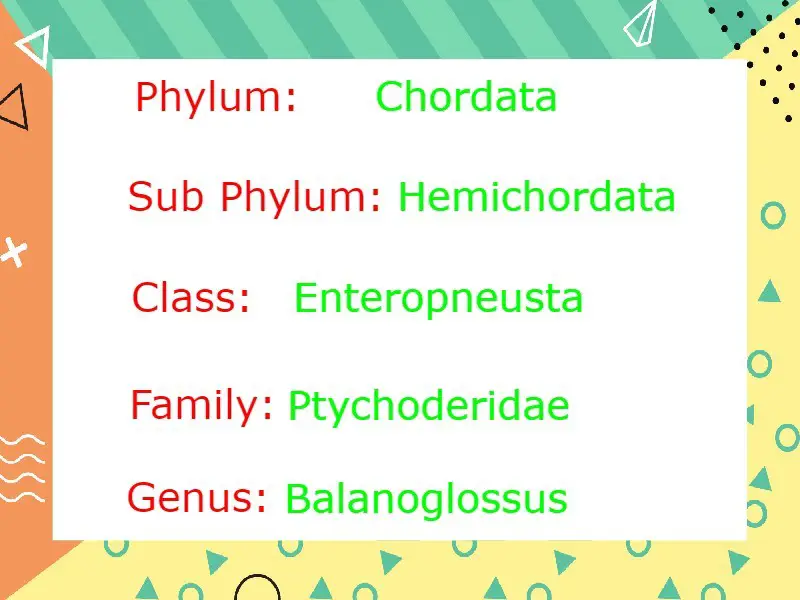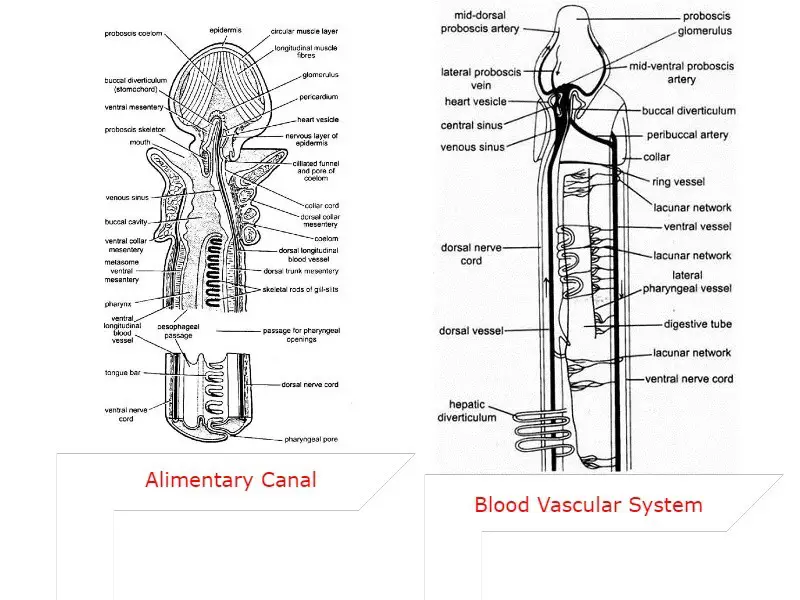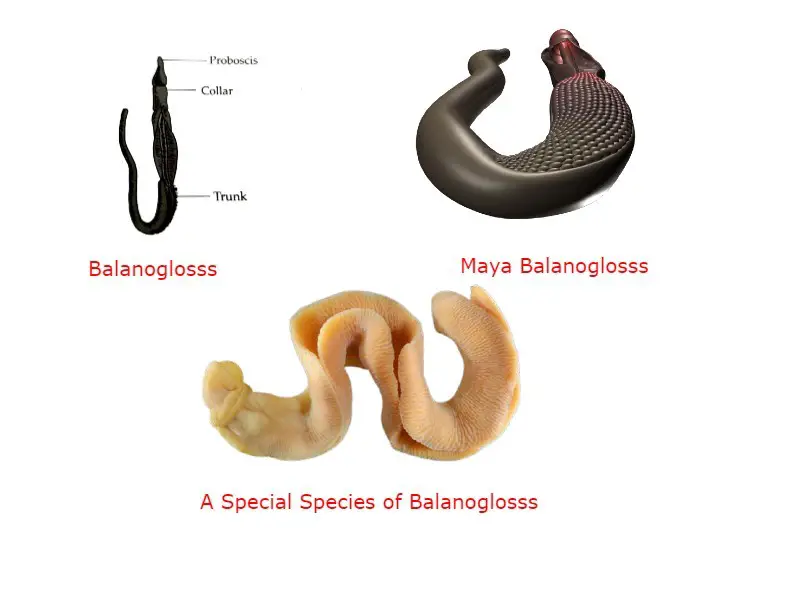Balanoglossus is a group of animals that shows different similarities with different other groups of animals in different aspects. Those similarities between Balanoglossus and different other groups of animals inspired most of the workers to think about the relationship of Balanoglossus with another group of animals.
Now we will discuss the resemblance of Balanoglossus with Annelida, due to different similarities Spengel tried to make a relationship of Balanoglossus with Annelida, we listed those similarities below —
Affinities of Balanoglossus with Annelida:
- The common examples of Annelida, earthworm has a vermiform long body shape and in Balanoglossus also we can see such vermiform body shape.
- In both Balanoglossus and in Annelida the body cavity is represented by the coelom.
- Balanoglossus have a tubular body shape and they live in sand or mud in the burrow, annelida also live in burrows.
- Balanoglossus feed on the mud and sand enter into their mouth through the water current and from there they feed on organic particles and microorganisms. Annelida also feed on mud.
- Balanoglossus live in burrows and the posterior part of their burrows is plugged by the fecal matter or casting, this type of casting is also observed in Annelida.

- In earthworm (an Annelida) show ring like body segmentation which is visible from outside. In Balanoglossus through the body such segmentation is not observed but the collar region of Balanoglossus is much similar with the clitellum of Earthworm.
- In Balanoglossus the anterior most part of the body is proboscis and it is present before the mouth opening so proboscis in Balanoglossus is preoral. In earthworm the mouth opening is not present in apical position the prosomium part comes before the mouth opening.
- In Balanoglossus the two main blood vessels are dorsal blood vessel and the ventral blood vessel. In dorsal blood vessels the direction of flow of blood is in forward and in ventral blood vessel blood flow in backwards directions, it is also similar in Annelida.
- In Balanoglossus the cardiac sac or heart vesicles represent the heart which present on the dorsal side of the body. Like Balanoglossus, in Annelida the position of heart is dorsal.
- Annelida and Balanoglossus show great resemblance in their larval stage, the tornaria larva of Balanoglossus and trochphore larva of Annelida show much similarity. Sensory ciliary organ, eyespot, sensory epical plate, well developed alimentary canal is present in both Tornaria larva of Balanoglossus and the Trochphore larva of Annelida.
Objections:
The similarities between Balanoglossus and the Annelida make Spengel think that they are close relative in evolutionary history but there are some major difference between them that makes them separate from each other —-
- In Annelida the nerve cord is ventral and it is paired, the nerve cords are solid in Annelida. In Balanoglossus nerve cord is epidermal and the nerve cord present on both dorsal and ventral side. The nerve cord in Balanoglossus is solid but in collar region the dorsal nerve cord show a hollow cavity.
- In Annelida the excretory organ is nephridia and present in almost all segments of the body. In Balanoglossus the excretory organ is proboscis gland or glomerulus which only present in the proboscis coelom.
- Balanoglossus have pharyngeal gill slits on the branchiogenital part of the trunk in two longitudinal rows but in Annelida pharyngeal gill slits are absent.

- In Balanoglossus the buccal diverticulum or stomochord is present while there are no such structure in Annelida.
- It is true that the tornaria larva of Balanoglossus and the Trochphore larva of Annelida show similarity in different aspects but there are some major differences between them. The tornaria larva have preoral or proboscis coelom and the larva do not have nephridia, the blastopore of tornaria larva develop anus of the adult Balanoglossus. In Trochphore larva the blastopore form the mouth, so Balanoglossus is Deuterostome while Annelida are protostome. Moreover the Trochphore larva do not have proboscis coelom or preoral coelom like Annelida and nephridia is present in them.

Conclusion on the Relationship Between Balanoglossus and Annelida:
It is true that Balanoglossus and Annelida show many similarities in different features in both the adult stage and larval stage but there are also some fundamental differences between them which indicates that they are not so much closer as they pretend.
It may be both Annelida and Balanoglossus show such similarity due to their common habitat and it may be a result of convergence evolution.
Reference:
Detailed Information on
What is Balanoglossus: A Tongue Worm
External Morphology of Balanoglossus
Coelom and Coelomic Fluid in Balanoglossus
Digestive System of Balanoglossus
Respiratory System of Balanoglossus
Blood Vascular System of Balanoglossus
Balanoglossus: Excretory, Reproductive and Nervous Systems
Affinities of Balanoglossus with Chordata
Affinities of Balanoglossus with Rhynchocephalia, Phoronida, and Pogonophora
Hi Everyone!!! Welcome to Imaluop. Imaluop always try to learn some new and he want to share to other people. Here we will try to learn various topics on Science, specially on Biological Sciences.
